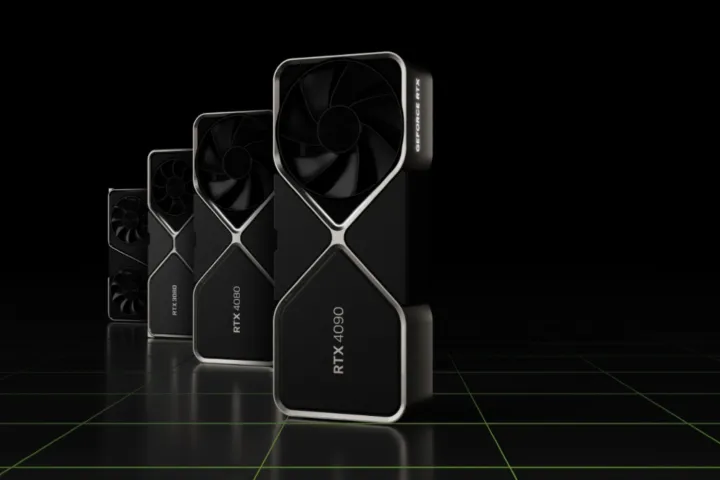Nvidia’s RTX 4060 could have been a fan favorite and one of the best graphics cards in the midrange sector, but it seems that it might be a bit of a flop instead.
Reliable hardware leaker kopite7kimi shared some specifications of the card, and if the rumors check out, it appears that Nvidia made some strange choices when creating the GPU.
In the previous generation of GPUs, the RTX 3060 was always a popular choice. Powerful enough to offer seamless 1080p gaming, but not as overpriced as the rest of the range, the RTX 3060 has a lot to offer even now if you’re building a budget PC.
Most of us expected the RTX 4060 to be similarly well-received, especially if you consider the unexpected success of the RTX 4070 Ti. Simply put, most of us don’t want to spend $2,000 on a GPU, so these more budget-friendly choices are always welcome — unless they turn out to be worse than their last-gen counterparts, that is.
So far, the RTX 4060 seems highly unimpressive when compared to the RTX 3060. According to kopite7kimi, the card will come with just 3,072 CUDA cores (versus 3,584 on the RTX 3060), 96 Tensor cores (112 for the 3060), and 24 raytracing cores (28). The core count is actually 17% lower than the last-gen RTX 3060. Of course, the bump in architecture — from Ampere to Ada Lovelace — delivers some upgrades on its own, such as access to DLSS 3.
The upcoming RTX 4060 also seems to have considerably less VRAM than its Ampere counterpart. It’s said to release with 8GB of 18Gbps GDDR6 memory, whereas the RTX 3060 had 12GB, but clocked at 15Gbps. However, the GPU is getting a much-needed L2 cache upgrade, and it’s massive, marking a 700% boost from Ampere. The RTX 4060 is said to come with 24MB of L2 cache while the 3060 only has 3MB. However, it’s still half the L2 cache of the RTX 4070 Ti.

All of these weird spec choices can be traced back to the chip that the RTX 4060 is said to house. The Twitter leaker predicts that it will be based on the PG190 PCB and the AD107-400-A1 die. Nvidia is already using this die for the mobile versions of the RTX 4060 and the RTX 4050. This implies that Nvidia is using a mobile chip for a desktop GPU.
It’s difficult to say why Nvidia would want to release such a cutdown, mobile version of the chip. Aside from the Ada Lovelace architecture, the RTX 4060 doesn’t seem to have much to recommend it. It might be one of the most power-conservative GPUs in Nvidia’s lineup, however, because rumor has it that it will come with a 115-watt TDP — 32% lower than the RTX 3060.
Lower power requirements are always nice. Odds are that the RTX 4060 won’t be melting the way the RTX 4090 has been. However, it’s probably safe to say that most users would prefer an upgrade in spec for their desktop gaming GPU rather than a lower TDP, since the 3060 had a fairly reasonable TDP to begin with. We’ll just have to see the final specs once the card hits the market.
Editors’ Recommendations





